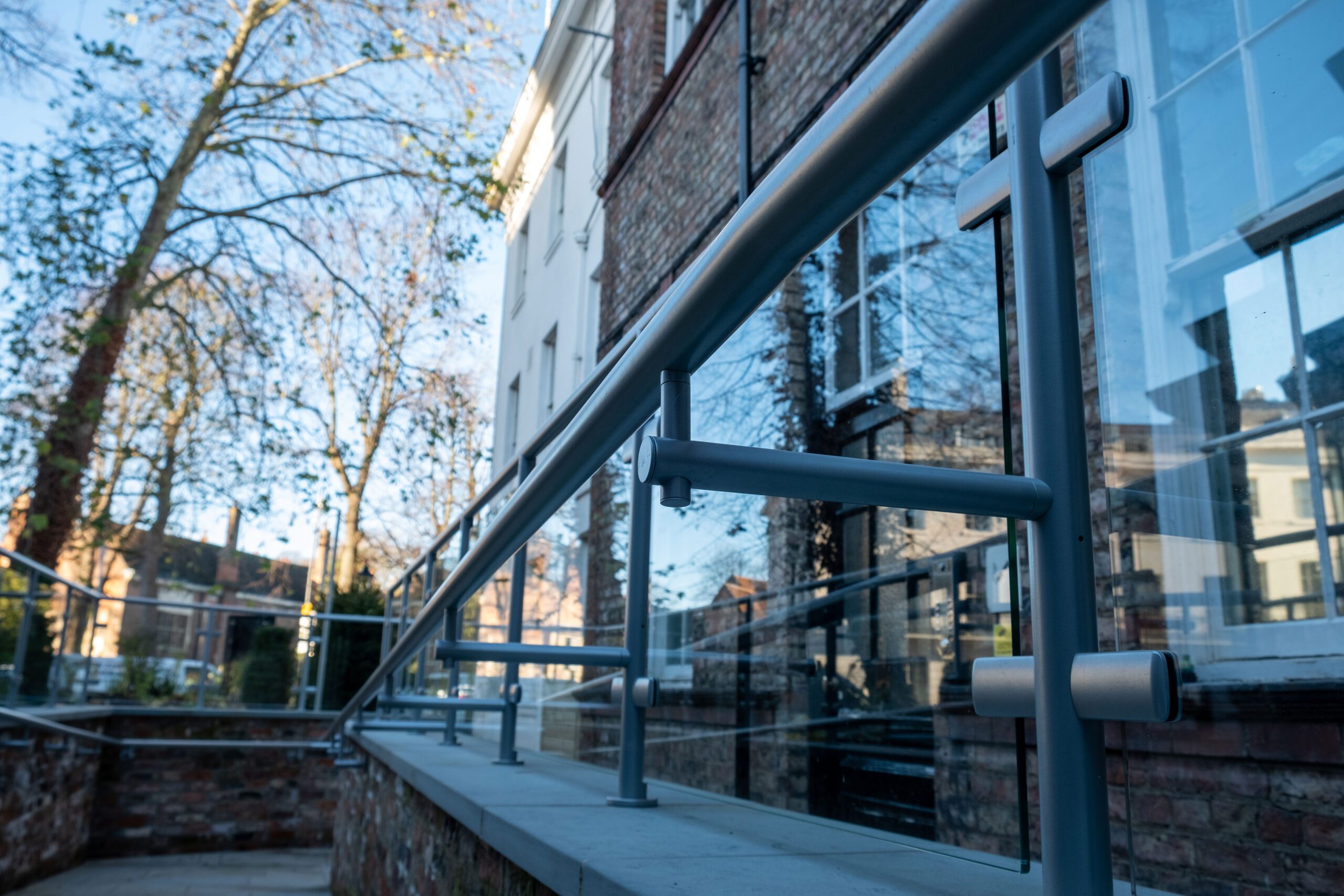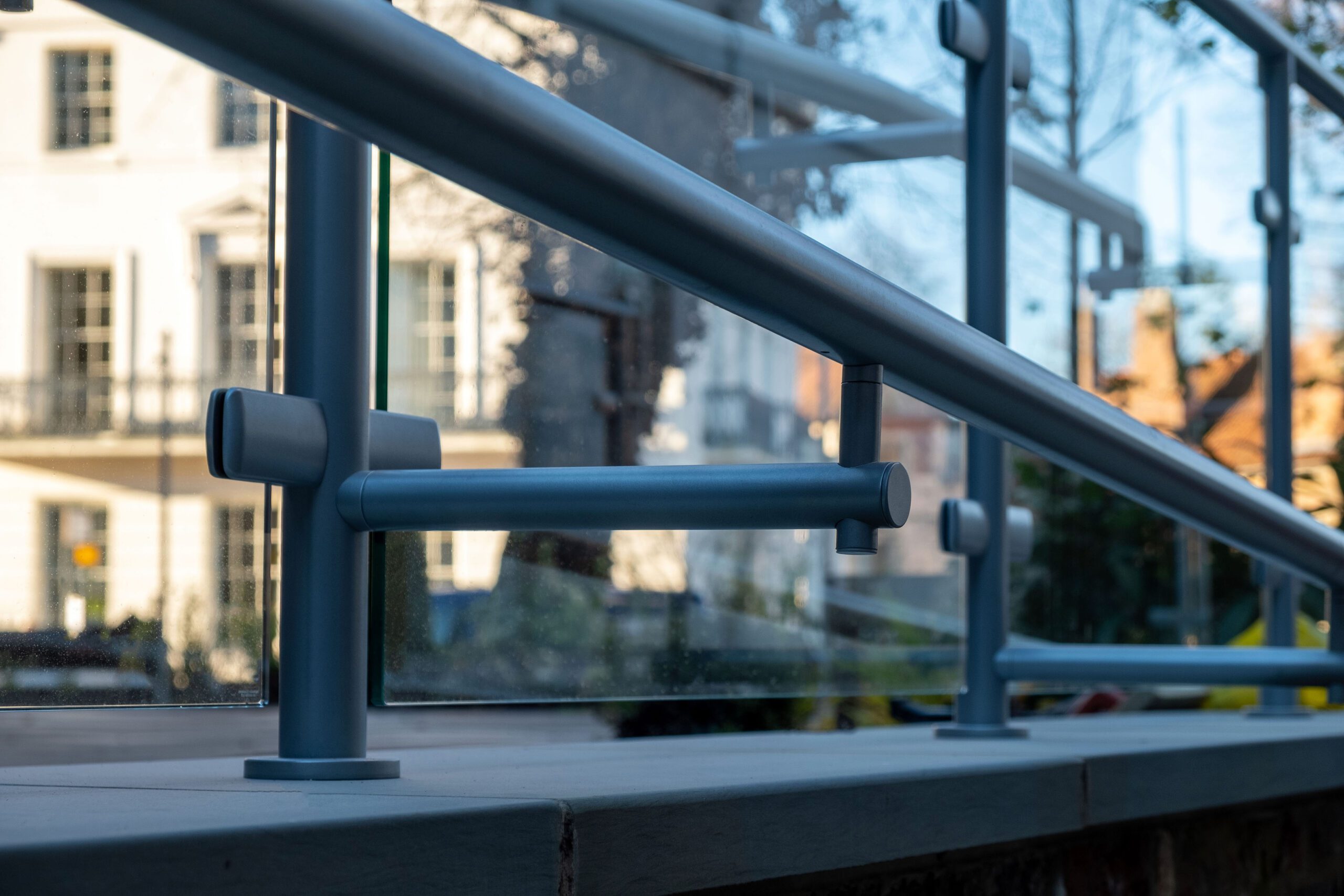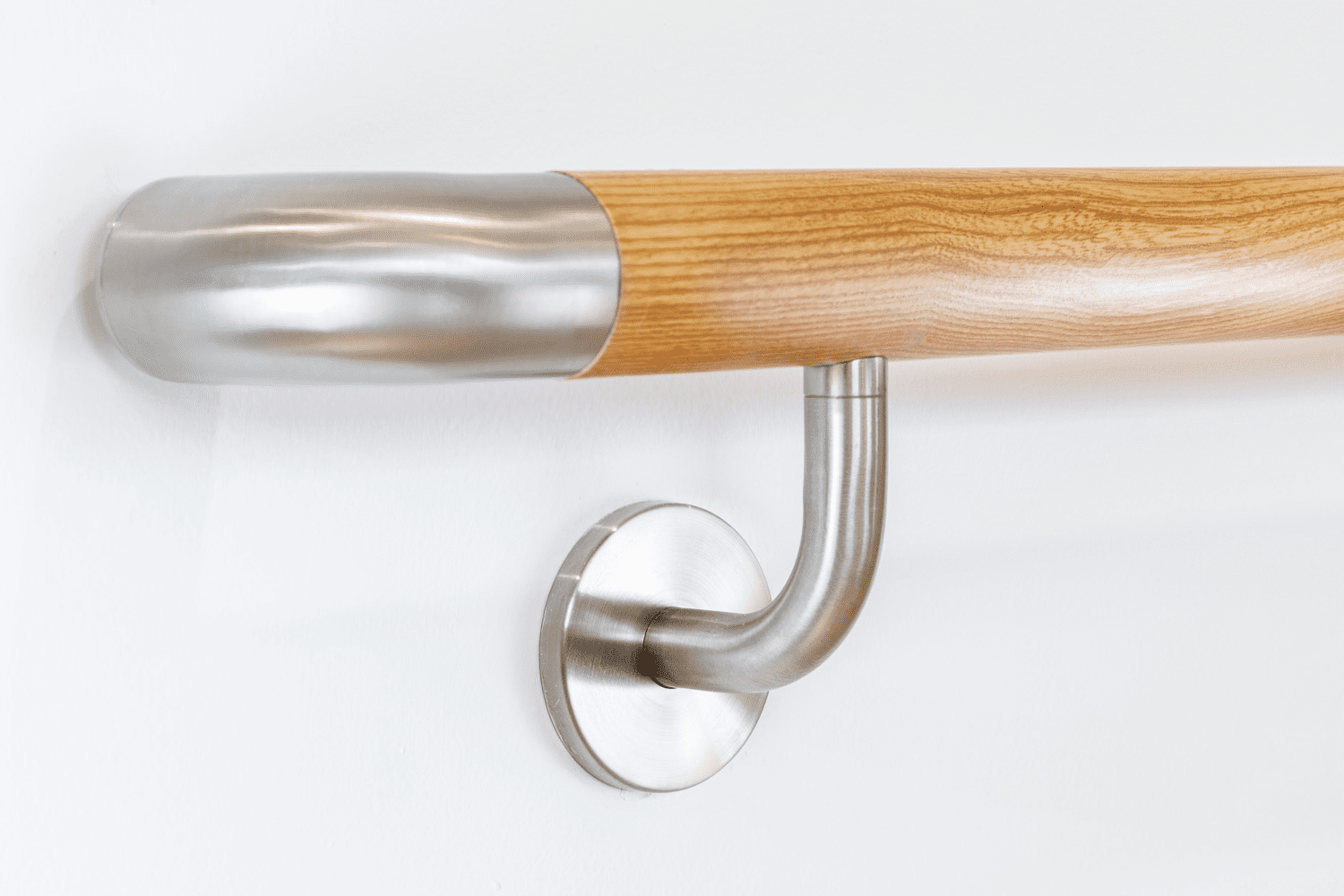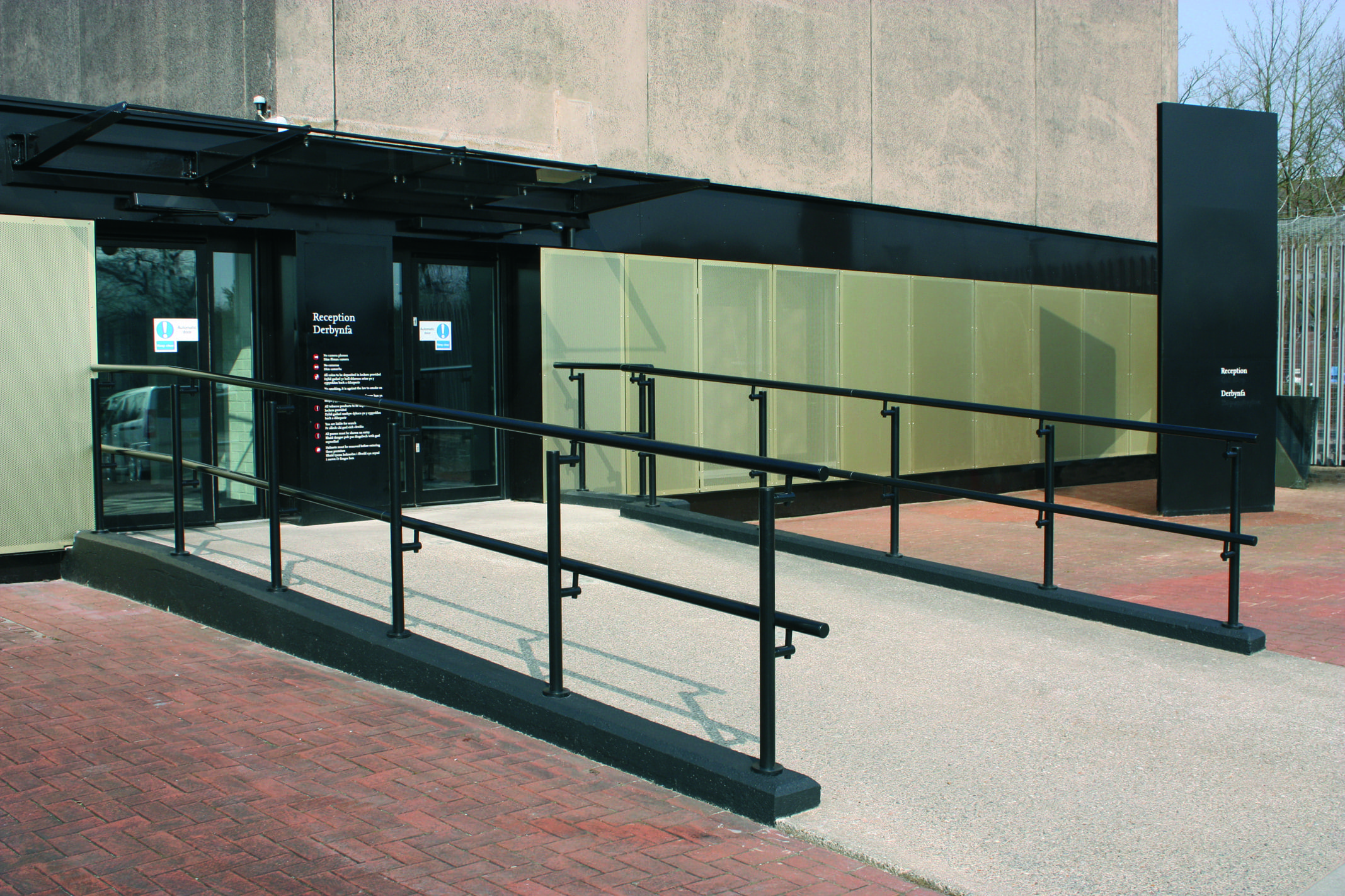Balustrade Design Guide – Part 2: Handrails
1. Handrail/toprail heights
BS8300 Section K2 states that the height of the toprail should be a minimum of 900mm for internal balustrades in residential applications such as landings, stairs, ramps and edges of internal floors. For external balustrades in residential and commercial environments, K2 recommends that the height of the toprail should be a minimum of 900mm for stairs and ramps and 1100mm in all other areas such as balconies and floor edges.
Equality Act 2010 (supporting the existing Building Regulations) requires that property owners must think ahead and take steps to address barriers that impede disabled people. It states that reasonable adjustments must be made where disabled people experience a ‘substantial disadvantage’. Building Regulation Approved Document M specifies that handrail heights on all building stairways and ramps do not discriminate against any disability group. Ramps are a particularly important consideration and they should include dual-height handrails with a midrail height located at just over half of the toprail height – for example, if the toprail is 975, the midrail should be around 545mm high. Dual-height handrails should be installed on both sides of ramps longer than two metres. BS8300 requires a minimum clear width of 1000mm between the handrails on each side of the ramp. You also need to consider the limits for ramp gradients in relation to BS8300 and Doc M – the below table provides a summary of requirements.
LIMITS FOR RAMP GRADIENTS (ref: BS300 & Doc M)

2. Handrail shape and size
In commercial and public buildings an important aspect of handrails is meeting the DDA obligations in Part M of the Building Regulations. Taking into account the Building Regulations Approved Document Part M, and the guidance from BS5395-1:2010, the new BS8300 recommends a circular handrail with a diameter between 32 and 50mm.
Neaco would recommend a DDA-compliant handrail diameter of between 45 and 50mm. Ideally, it should match the diameter of any supporting stanchions. Below 45mm can cause issues with user handling – as the hand moves along the rail, its grip could be loosened by fingertips catching on the stanchion /wall connections. Please see section 2 (below) for more advice on the importance of stanchion /wall connections. If DDA compliance is not required for the building and you prefer an oval toprail or handrail, we would recommend a width of 90mm and a height of 45mm.

3. Handrail connections
The design of the connection between the handrail and the stanchion and/or the wall can affect the smoothness of the user handling. In certain cases where the stanchion and handrail are in line, the fingers can catch on a supporting stanchion. This problem largely occurs when the stanchion stays at full width right up to the point where it meets the underside of the toprail. To avoid this you can use a narrower stem connector between the stanchion and handrail (see below) to allow fingers to grip more of the handrail without catching on the stanchion.
When a handrail is offset from the stanchion, we recommend that the connecting bracket forms a right angle so that the connector still meets the underside of the handrail (see below left) rather than a straight horizontal connector that meets the side of the handrail. The latter makes it very difficult to run the hands along the rail without releasing the grip. We would also recommend this approach for handrails directly connected to walls (see below right).

4. Temperature and comfort to touch
Cold conditions can cause metal handrails to become extremely cold and uncomfortable to the touch in external installations. This can cause reluctance to use a handrail or a tendency to release grip in response to discomfort, which poses a safety hazard. In the 2009 edition of BS 8300, a note added to clause 5.10.5 refers to this context about the recommendation that handrails should not be cold or hot to the touch.’ The recommendations apply to external areas that provide disabled access to a building, but they don’t apply to balconies and fire escape stairs.
To protect against problems caused by extremely cold temperatures, external handrails should be coated in a material of low thermal conductivity such as polyester powder coating, or nylon powder coating (you can read more about these coatings here). Timber handrails are low in thermal conductivity but they can be vulnerable to the effects of weathering in external conditions. However, Neaco’s Timberline system (below) provides aluminium handrails with a powder-coated reproduction of wood.

5. Visual Contrast & Light Reflectance Values
Light Reflectance Value (LRV) is a key determining factor in the eye’s perception of visual contrast between two surfaces. LRV is the amount of light reflected from a surface. Theoretically, its value can range from 0 (jet black) to 100 (perfect white) but in practice, these two values are never achieved. The greater the difference in LRV between the two surfaces, the greater the visual contrast.
Approved Document M (2004) strictly defined a 30-point difference in LRV as a reliable indicator of adequate visual contrast. However, the 2009 amendment to BS 8300 acknowledges that other factors can affect visual perception: for example, the relative area of surfaces, any curvatures and textured, metallic glossy finishes. The difference in LRV is more important when the comparison applies to a small surface and a large surface e.g. a handrail and a wall. An LRV difference of 30 or more is an acceptable visual contrast according to the latest guidance.



